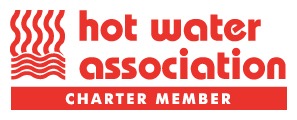
One size doesn’t fit all
Isaac Occhipinti, Head of External Affairs, HWA
The domestic hot water cylinder industry is a crowded market, the overwhelming majority of unvented cylinders look the same, and in most cases they are fitted in the same way, but there are many differences that the installer and end user should be aware of when selecting a product. It is a challenge for cylinder manufacturers to show the USPs of their product.
Clearly a stainless steel pressurized cylinder has to be the correct specification for its use and fuel type. Manufacturers will typically offer of full range of direct electric mains pressure hot water cylinder, indirect for boilers, and renewable heat source cylinders for heat pump and solar thermal. Most of these will be offered in 6 capacities typically between 100 and 300 litres.
The most immediately obvious difference between pressurized hot water cylinder types is the method of accommodation of water heating expansion. The industry standard has always been a cylinder with a separate expansion vessel that is typically wall mounted. The system works. It is reliable, but it takes up space in a cylinder cupboard that could otherwise be used for storage.
By contrast the “bubble top”, or “air gap” system dispenses with the need of a separate expansion vessel. The system works by having a bubble of compressed air trapped in the top of the pressurised unvented hotwater cylinder and the hot water drawn from the unit from a side or top mounted internal pipe that reaches into the water. The air gap is often kept separate from the water by a plastic floating baffle that sits on the water and moves vertically with the expansion of the water according to heat. The air gap should be regenerated annually when the unit is serviced by an approved installer, thus preventing a loss of gap that would otherwise result in over pressurisation of the cylinder and an operational discharge from the expansion relief valve.
Energy efficient cylinders with low heat loss are also available with an “all on top” design, with heating coil, hot and cold water services, safety valves and expansion vessels all concealed and contained under a removable lid. The purpose of this design is to minimise the impact of external pipework and connections and optimise usable space.
The more advanced a product is in terms of design and efficiency, the more expensive it is likely to be. Some manufacturers will strain every sinew to make the product as economic as possible to buy, others will invest heavily in new technology to improve the design, energy efficiency and ease of fitting.
Efficiency is not just about energy usage. Space efficiency is also important to a householder. A small increase in diameter can significantly reduce height in a cylinder, allowing more storage shelves or even a washing machine to be fitted in the same cupboard. Clearly a non-standard expansion solution will also help in this quest.
At the opposite end, slim line and even horizontal cylinders are available to fit into specific areas. Again, more expensive, but they are problem solvers.
Heat up time has in recently given way to low heat loss efficiency as the benchmark of performance, however if large volumes of hot water are required, perhaps in commercial circumstance, customers should look for high specification coils to provide a fast recovery rate and providing a low standing heat loss rate. The horses for courses argument also is relevant for coil type. In hard water areas heat exchangers that could harbour and encourage limescale deposits should be avoided.
Unvented water heaters are not all the same. Quality, efficiency, design ingenuity and price all vary. The end customer will not always be interested in the same features as an installer, and giving an end user alternatives at differing prices can lead to both a happier customer and a more profitable project for the installer.
The introduction of energy labelling has had a significant effect on the high pressure unvented hot water cylinder industry and the products available. The updated regulations from September 2017 have effectively outlawed products below a certain efficiency. This has had a dramatic effect on the performance and efficiency of products that are available. The difference in energy costs between a new A-rated hot water cylinder and an older unit from the turn of the millennium can be close to £100 per year on a gas fired central heating system, with greater savings on electric mains pressure unvented hot water cylinders. Most modern unvented hotwater cylinders are insulated with Polyurethane foam however efficiency levels, shown by the ERP label and supporting fiche, do vary according to thickness, quality and type of insulation, with A rated hot water cylinders also available with vacuum panel insulation.
The Hot Water Association Charter identifies manufacturers whose products have passed a high level of audit and scrutiny to demonstrate that the products are correctly labelled and performance is independently verified. Charter members can be found at www.hotwater.org.uk/hwa-charter


